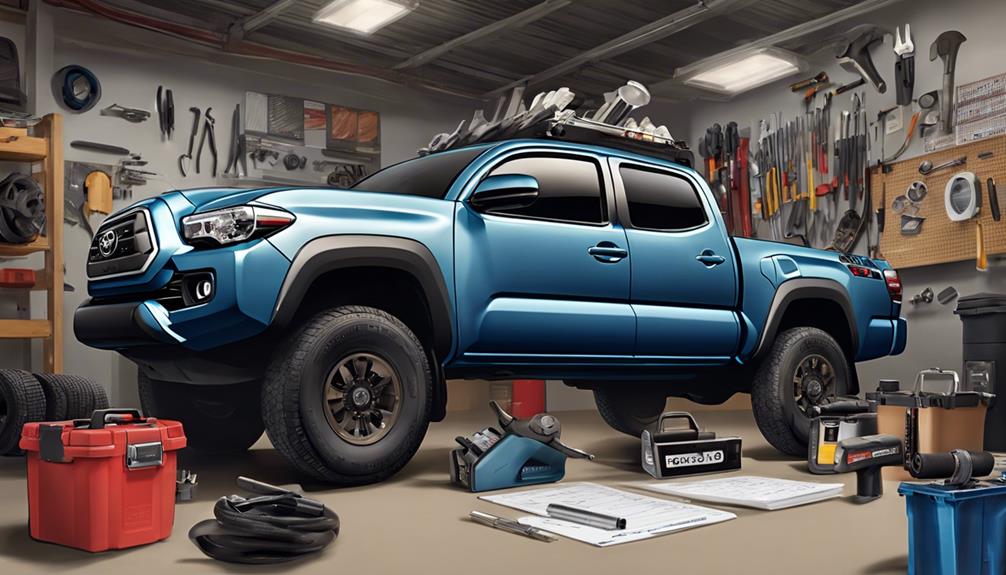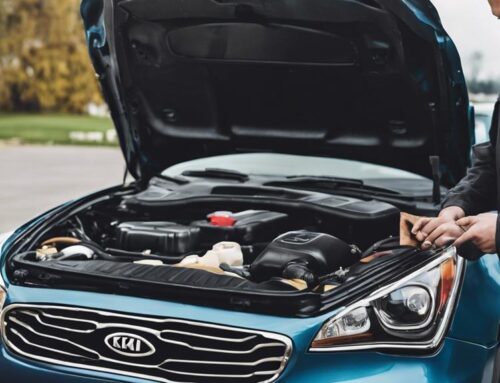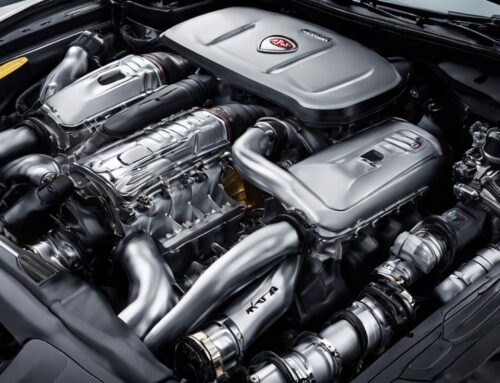Keep your Toyota Tacoma running smoothly by following essential maintenance. Change your oil and rotate tires every 5,000 to 10,000 miles. Regularly check oil, coolant, and brake fluid levels. Replace air and cabin filters every 15,000 to 30,000 miles. Inspect brakes every 5,000 to 10,000 miles, and keep an eye on your battery for corrosion and voltage issues, replacing it every three years. Don't neglect the timing belt, as its replacement is vital for the engine's health. Replace spark plugs every 30,000 to 100,000 miles to maintain top performance. There's more to maintaining your Tacoma for peak reliability.
Key Takeaways
- Change oil and rotate tires every 5,000 to 10,000 miles.
- Inspect brake system and components every 5,000 to 10,000 miles.
- Replace cabin air filters every 15,000 to 30,000 miles.
- Regularly check battery terminals for corrosion and test voltage periodically.
- Replace spark plugs every 30,000 to 100,000 miles for optimal engine performance.
Oil Changes and Tire Rotations
Regular oil changes and tire rotations are essential for keeping your Tacoma running smoothly and efficiently. To maintain your engine's health and performance, you should change the oil every 5,000 to 10,000 miles. This routine task prevents engine wear and removes contaminants, ensuring your Tacoma performs at its best. Neglecting oil changes can lead to sludge build-up, which might cause costly damage and reduced efficiency.
Equally important is rotating your tires at the same intervals. By doing so, you guarantee even wear across all tires, which extends their lifespan and enhances your vehicle's handling. Uneven tire wear can lead to poor traction and increased fuel consumption, both of which diminish your control over the vehicle.
Adhering to the recommended maintenance schedule for oil changes and tire rotations not only preserves your Tacoma's longevity but also safeguards you from unexpected, expensive repairs. Properly maintained oil and tires contribute significantly to top-notch fuel efficiency and overall performance. By staying on top of these maintenance tasks, you take charge of your Tacoma's health, keeping it dependable and road-ready. Prioritize these routines to keep your vehicle in peak condition.
Brake System Inspection
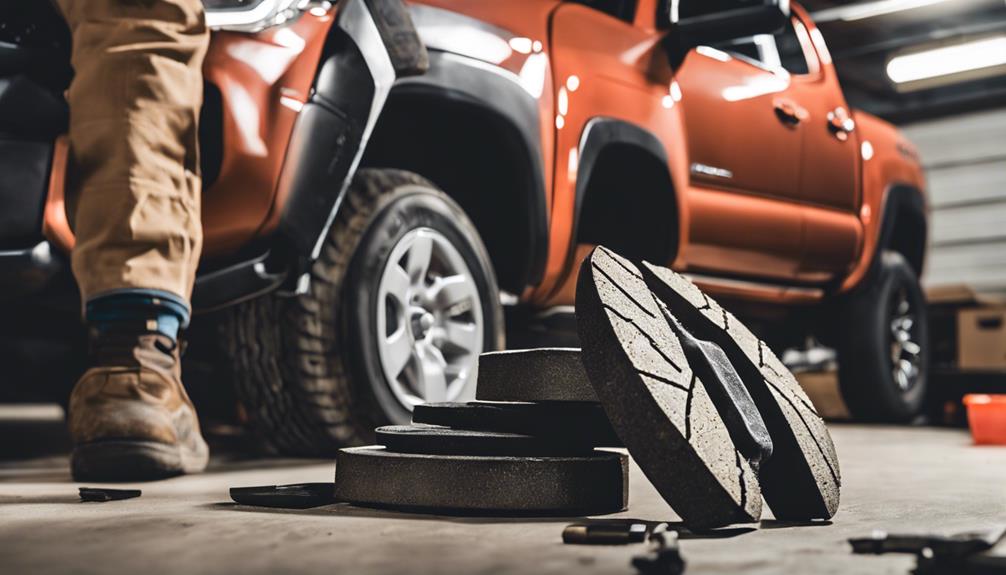
You should inspect your Tacoma's brake system every 5,000 to 10,000 miles to make sure it's performing at its best and safely. Keeping an eye on your brakes means you'll catch any issues early, ensuring you maintain control over your vehicle. During these checks, visually inspect important components like brake pads, rotors, drums, and discs.
Regular inspections help you spot wear and tear on brake linings and pads, allowing you to replace them before they become a hazard. Neglecting these checks can lead to problems like brake fade, loss of stopping power, or even brake fluid leaks, all of which compromise your safety and control.
Fluid Level Checks
When it comes to fluid level checks, make sure you regularly monitor your Tacoma's oil and coolant levels. Inspecting the brake fluid is equally important to guarantee your brakes function properly. Keeping these fluids at the right levels helps prevent overheating, brake failure, and other serious issues.
Oil and Coolant Levels
Monitoring your Tacoma's oil and coolant levels guarantees the engine stays lubricated and cool, preventing potential damage. Regularly checking these fluid levels is important for detecting leaks or issues early, saving you from costly repairs later. Maintaining proper oil levels maintains engine lubrication, which is essential for reducing friction and wear. Similarly, keeping the correct coolant levels helps prevent overheating, keeping your engine running smoothly.
Here's a quick guide for checking your fluid levels:
| Fluid Type | Recommended Action |
|---|---|
| Oil | Check monthly, top off as needed |
| Coolant | Check monthly, refill to recommended level |
| Tools Needed | Clean rag, funnel |
| Warning Signs | Low levels, discoloration |
You should make checking oil and coolant levels a routine part of your maintenance schedule. For the oil, use the dipstick to assess levels and top off with the manufacturer's recommended oil type if necessary. For coolant, ensure the level is between the 'MIN' and 'MAX' marks on the reservoir. If either fluid is consistently low, inspect for leaks or other underlying issues.
Brake Fluid Inspection
Regularly inspecting your Tacoma's brake fluid levels is crucial for maintaining peak braking performance and road safety. To begin, locate the brake fluid reservoir under the hood. Check the fluid level against the marks on the side of the reservoir; it should be within the recommended range. If the level is low, it might indicate potential leaks in the braking system that need immediate attention.
Examine the color of the brake fluid. It should be clear or slightly amber. Any sign of discoloration, such as a dark or murky appearance, can signal contamination, necessitating a brake fluid flush. Keeping the fluid clean and at the proper level ensures top performance and prevents potential brake failure.
Consult your vehicle's manual for specific guidelines on how often to inspect and replace your brake fluid. Regular checks are a proactive way to maintain control over your Tacoma's braking system. By staying vigilant about your brake fluid, you're taking an important step in preserving your truck's safety and reliability on the road. Don't wait for problems to arise—make brake fluid inspection a regular part of your maintenance routine.
Air and Cabin Filter Replacement
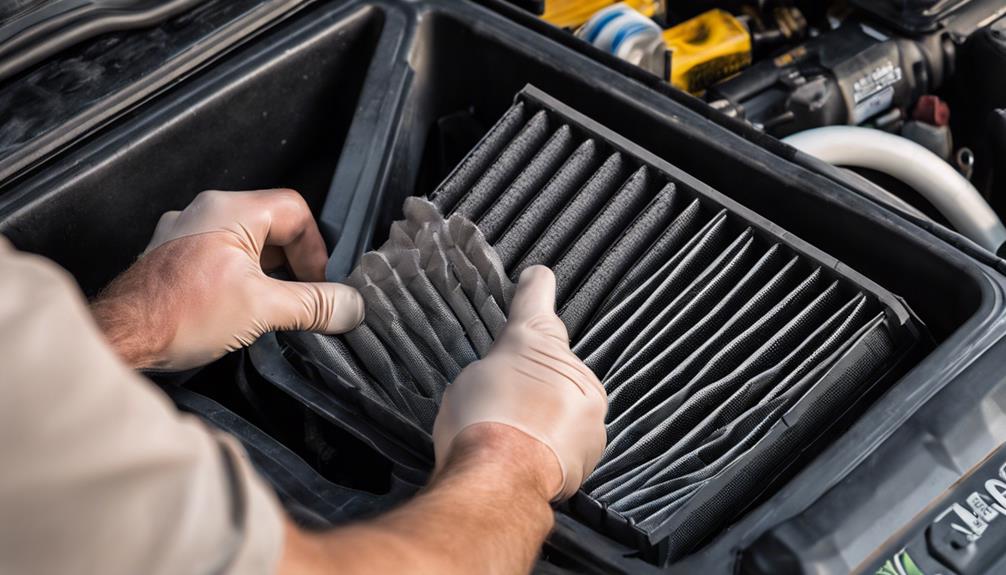
Replacing your Tacoma's air and cabin filters is essential for maintaining air quality and vehicle efficiency. Your cabin air filter should be changed every 15,000 to 30,000 miles. Doing so guarantees the HVAC system works efficiently, keeping the air inside your vehicle fresh and free from musty odors. Swapping out the cabin air filter also reduces allergens and pollutants, creating a healthier driving environment.
When it comes to the engine air filter, regular replacement ensures peak airflow. This is vital for maintaining performance and fuel efficiency. Following the manufacturer's recommendations for both air and cabin filter replacements not only enhances driving comfort but also extends your vehicle's longevity. Here's a quick reference table to guide you:
| Filter Type | Replacement Interval |
|---|---|
| Cabin Air Filter | Every 15,000 – 30,000 miles |
| Engine Air Filter | As per manufacturer's recommendation |
| Benefit | Impact |
| Improved HVAC Efficiency | Better air quality, no odors |
| Reduced Allergens | Healthier driving environment |
| Peak Engine Airflow | Enhanced performance, fuel efficiency |
| Longevity of Vehicle | Improved comfort, extended lifespan |
Taking control of your Tacoma's air and cabin filter maintenance ensures you enjoy a clean, efficient, and reliable driving experience. Don't wait—stay ahead with timely replacements.
Battery Maintenance
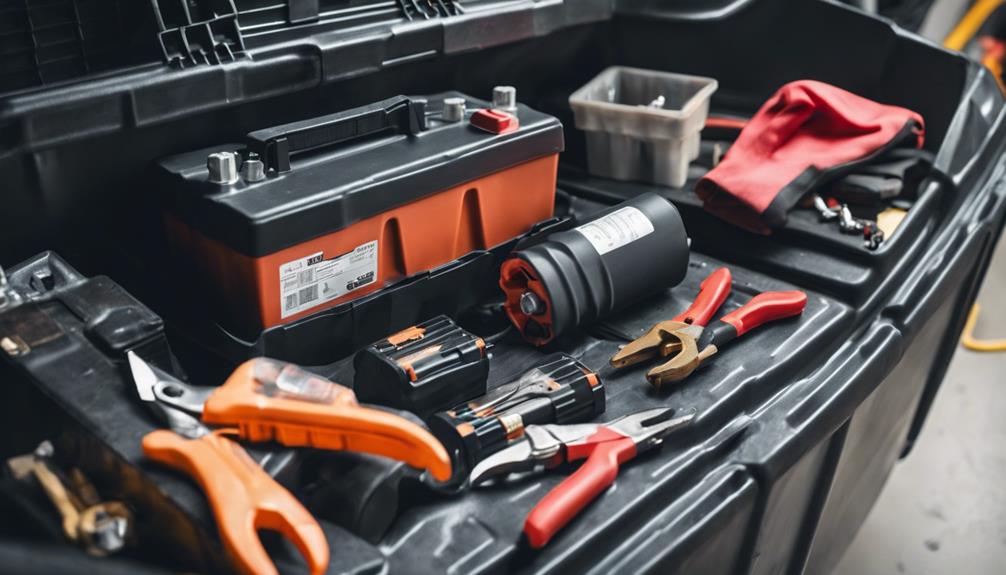
After making sure your Tacoma's air and cabin filters are in top shape, it's time to focus on maintaining your battery to keep your vehicle running smoothly. Regular battery maintenance helps prevent unexpected breakdowns and ensures peak performance. Start by regularly checking the battery terminals for any corrosion buildup. Corrosion can impede electrical flow, causing issues with starting your vehicle.
To keep the terminals clean, use a mixture of baking soda and water. This simple solution effectively removes corrosion and ensures a good connection. It's also wise to test your battery's voltage periodically. Make sure it meets the manufacturer's recommended levels. If the voltage is low, it might be time for a new battery or a maintenance charge.
Consider investing in a battery charger. This device is especially useful if you don't drive your Tacoma daily. It keeps the battery charged during periods of inactivity, preventing it from draining completely.
Here's a quick checklist to keep your battery in prime shape:
- Check battery terminals for corrosion regularly
- Clean terminals with baking soda and water
- Test battery voltage to ensure peak performance
If your battery is over three years old, consider replacing it to avoid unexpected failures. Taking these steps gives you control over your vehicle's reliability.
Timing Belt Replacement
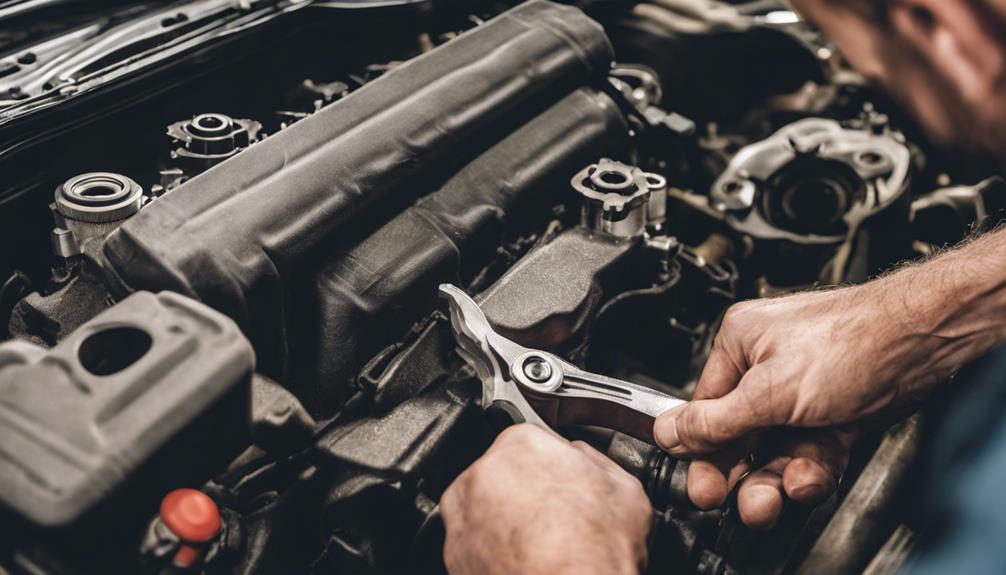
Ensuring your Tacoma's timing belt is replaced every 90,000 to 105,000 miles is vital to prevent engine damage and costly repairs. A worn timing belt can wreak havoc on your engine, potentially leading to catastrophic failure. You don't want to be stranded or face an expensive repair bill because a simple maintenance task was overlooked.
Replacing a timing belt involves significant labor, as it requires disassembling various engine components to access the belt. This isn't a job for the faint-hearted or inexperienced, but it's essential for your Tacoma's longevity. Following Toyota's recommended schedule ensures your engine runs smoothly and efficiently, giving you peace of mind on every drive.
Ignoring this essential maintenance can lead to severe engine damage, impacting your vehicle's performance and reliability. Imagine the frustration of dealing with an engine failure just because a timing belt wasn't replaced on time.
Stay in control and protect your investment by adhering to the manufacturer's guidelines. Keep your Tacoma performing at its best by scheduling a timing belt replacement at the appropriate intervals. This proactive step will save you time, money, and headaches down the road.
Spark Plug and Ignition Fixes
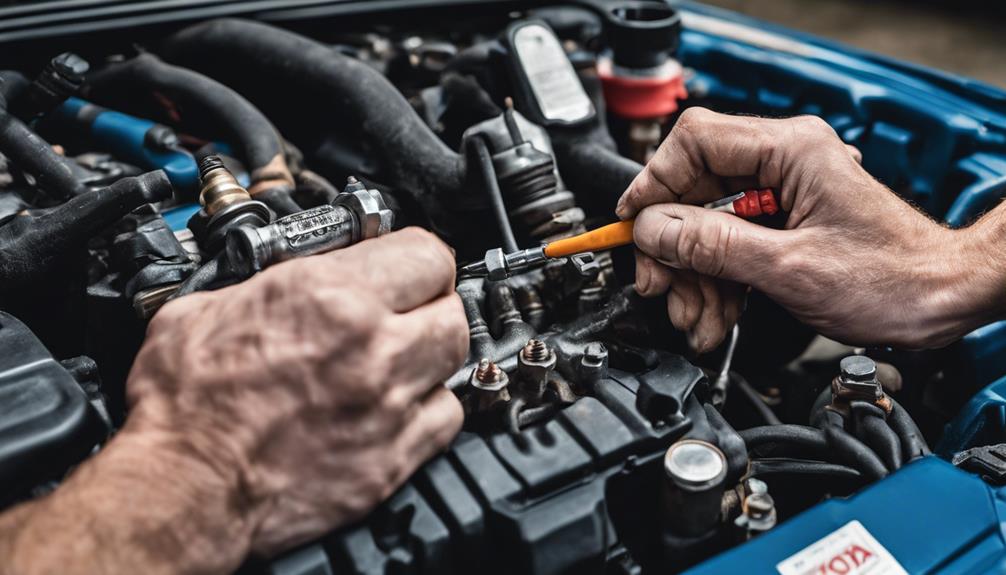
To keep your Tacoma running smoothly, it's important to understand the lifespan of your spark plugs and recognize symptoms of failing ignition coils. You'll need the right tools for replacing these components to maintain peak engine performance. Addressing these issues promptly can save you from costly repairs and guarantee your vehicle remains reliable.
Spark Plug Lifespan
Understanding the lifespan of your Tacoma's spark plugs is essential for maintaining peak engine performance and efficiency. Typically, spark plugs last between 30,000 to 100,000 miles, depending on their type and material. Keeping an eye on their condition can save you from more serious engine issues down the line.
Worn spark plugs often manifest through symptoms like rough idling, poor acceleration, and decreased fuel efficiency. If you notice any of these signs, it's likely time to replace them. Regularly changing your spark plugs can greatly improve your engine's performance and fuel economy, ensuring your Tacoma runs smoothly and efficiently.
Here are some key points to remember:
- Mileage Intervals: Check your vehicle's manual or consult a mechanic for the recommended spark plug replacement interval for your Tacoma.
- Symptoms: Look out for rough idling, poor acceleration, and decreased fuel efficiency as indicators of worn spark plugs.
- Benefits: Replacing spark plugs can resolve ignition issues like misfires and difficulty starting, leading to better engine performance and fuel economy.
Ignition Coil Symptoms
Ignition coil issues often show up as engine misfires, rough idling, and poor fuel efficiency. When your Tacoma experiences these symptoms, it's important to act promptly. Faulty ignition coils can also cause problems with starting the vehicle and overall engine performance. Addressing these issues promptly guarantees that your spark plugs function properly and your ignition system remains efficient.
Diagnosing ignition coil problems typically involves checking for diagnostic trouble codes (DTCs) and performing a physical inspection. Ignoring these issues can lead to more severe engine problems and potential vehicle breakdowns, so don't delay necessary repairs.
Here's a quick reference table to help you understand the symptoms, causes, and solutions related to ignition coil issues:
| Symptom | Cause | Solution |
|---|---|---|
| Engine misfires | Faulty ignition coil | Replace ignition coil |
| Rough idling | Worn spark plugs | Check and replace spark plugs |
| Poor fuel efficiency | Ignition system failure | Inspect and repair ignition coil |
Replacement Tools Needed
When tackling spark plug and ignition coil replacements on your Tacoma, having the right tools on hand is essential for a smooth and efficient process. Not only will you save time, but you'll also minimize the risk of damaging your engine. For spark plug replacement, you'll need a few critical tools:
- Ratchet and socket set: A basic ratchet and socket set is indispensable. Make sure your socket set includes a spark plug socket and an extension bar.
- Gap gauge: This tool guarantees your spark plugs are correctly gapped for peak engine performance.
- Torque wrench: Essential for both spark plugs and ignition coils to make sure you adhere to the specific torque specifications and avoid over-tightening.
While a DIY spark plug replacement can save you significant money, buying these tools could cost between $20-$50. On the other hand, professional replacement might set you back $100-$300.
For ignition coil replacement, you'll again need a ratchet and socket set. Depending on your Tacoma model, a torque wrench might also be necessary to secure the ignition coils properly. Basic tools for this job can start at $30, but investing in professional tools or kits can cost $100-$200 or more. Having these tools gives you control over your maintenance schedule and ensures your vehicle runs smoothly.
Safety and Security Features
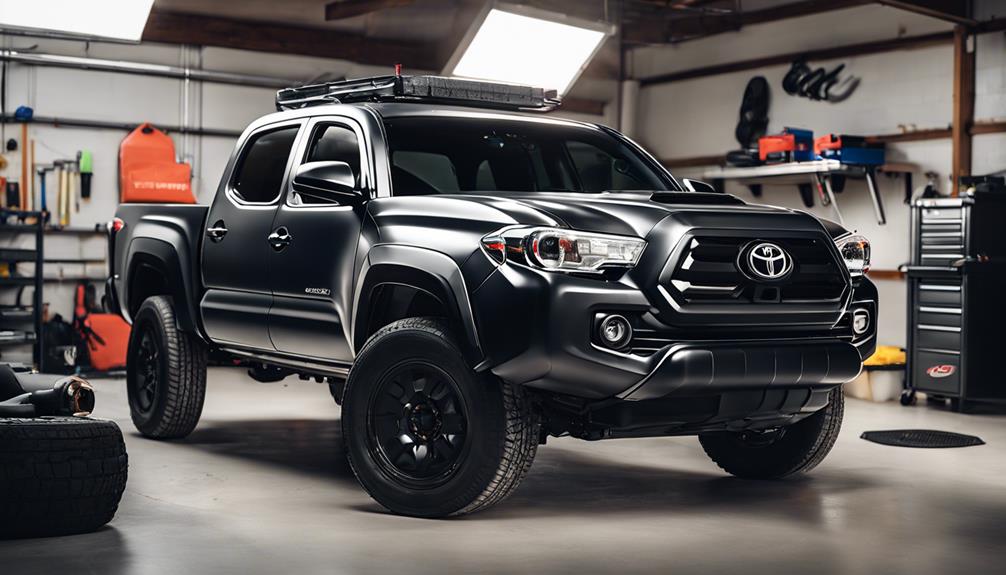
The Toyota Tacoma boasts a vital suite of safety and security features designed to keep you and your vehicle protected. With Toyota Safety Sense P (TSS-P), you'll benefit from advanced collision prevention technologies, such as pre-collision systems and lane departure alerts. These features work seamlessly to keep you aware of potential hazards and help you avoid accidents before they happen.
For those who value security, the Tacoma includes an anti-theft system with an engine immobilizer. This guarantees that your vehicle remains safe from theft, giving you peace of mind whether you're at home or on the go. Additionally, the Tacoma's sturdy body structure and advanced airbag system provide enhanced protection in the event of a collision, safeguarding you and your passengers.
Driving is made even safer with advanced technologies like blind spot monitoring and rear cross-traffic alert. These features increase your situational awareness, making lane changes and reversing much safer. The Tire Pressure Monitoring System (TPMS) also plays an essential role in maintaining your safety. By alerting you to suboptimal tire pressure, it ensures your vehicle remains safe and efficient on the road. With these features, you're always in control, driving a vehicle designed with your safety in mind.
Frequently Asked Questions
How Often Should I Replace the Windshield Wipers on My Tacoma?
You should replace the windshield wipers on your Tacoma every 6 months to a year. Keep an eye out for signs like streaking, skipping, or squeaking on your windshield. Regular inspections and timely replacements will keep your visibility clear during rainy or snowy conditions. Don't forget, different climates and driving conditions can affect wiper lifespan, so adjust your schedule accordingly for the best performance.
When Should I Check or Replace My Tacoma's Exhaust System?
Ever wondered when to check or replace your Tacoma's exhaust system? It's important to regularly inspect it for rust, damage, or leaks—and don't wait until it's too late. Listen for unusual noises, feel for vibrations, and watch for decreased fuel efficiency. A proactive approach guarantees peak engine performance and emissions control. Consult your maintenance schedule, and you'll stay in control, preventing costly repairs and keeping your Tacoma running smoothly.
What's the Recommended Schedule for Inspecting the Tacoma's Suspension System?
You should inspect your Tacoma's suspension system every 25,000 miles. Don't skip checking ball joints, dust covers, steering linkage, and boots during these inspections. Regular checks are essential to catch wear and tear early, helping you avoid costly repairs and maintaining your driving comfort. Sticking to this schedule guarantees your Tacoma performs at its best and extends its lifespan. Take control of your vehicle's health and safety by adhering to this maintenance routine.
How Do I Maintain the Tacoma's Paint and Exterior Finish?
You might think maintaining your Tacoma's paint is time-consuming, but it's actually straightforward. Regularly wash and wax it with high-quality car wash soap and microfiber towels to prevent scratches. Apply a ceramic coating for UV protection. Park in shaded areas or use a car cover to prevent fading. Promptly address any scratches or dents to prevent rust. These steps keep your Tacoma looking sharp and preserve its value.
Are There Specific Maintenance Tips for the Tacoma's Towing Equipment?
Regularly inspect your Tacoma's towing equipment to guarantee safe operations. Check the trailer hitch, wiring harness, and accessories for wear or damage. Follow the manufacturer's towing capacity guidelines and make sure your Tacoma's equipped for the load. When towing heavy loads, give extra attention to the transmission, brakes, and suspension. Properly lubricate and adjust towing components to prevent wear and ensure peak performance. Stay proactive to keep everything running smoothly.

